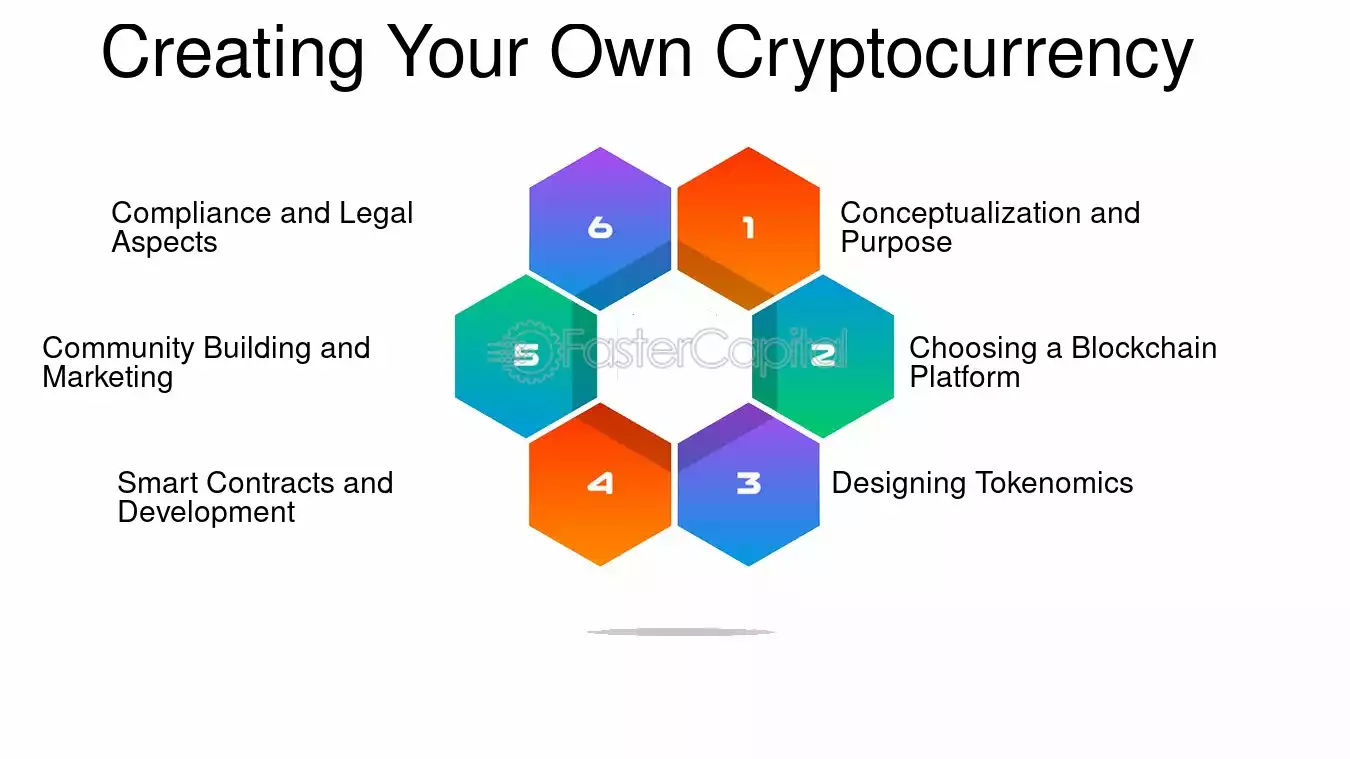Are you looking to create your own cryptocurrency? Developing a crypto coin is not just a trend; it’s also an opportunity for you to explore blockchain technology. In this article, we will guide you how to create your own crypto coin, from defining your goals to deploying on a blockchain platform.
What is a Cryptocurrency?
At its core, a cryptocurrency is a digital form of money designed to be secure and, in most cases, decentralized. Unlike traditional currencies issued by governments, cryptocurrencies operate on a distributed ledger technology, typically a blockchain, that records and verifies transactions across a network of computers. This decentralized nature eliminates the need for intermediaries like banks, potentially offering faster and cheaper transactions.
The Technology Behind Crypto: Blockchain Explained
Imagine a digital ledger replicated across numerous computers – that’s essentially a blockchain. Every time a transaction occurs, it’s grouped with others into a “block” and added to the ledger. This block is then linked to previous blocks, creating a chronological chain of information. This structure, coupled with cryptographic techniques, ensures the integrity and immutability of the data, making it extremely difficult to alter or tamper with.
Different Types of Cryptocurrencies and Their Use Cases
Cryptocurrencies come in various flavors, each with unique characteristics and purposes. Bitcoin, the pioneer, primarily serves as a decentralized digital currency. Ethereum, on the other hand, introduced smart contracts, enabling the development of decentralized applications (dApps) on its blockchain. Stablecoins, pegged to stable assets like the US dollar, aim to mitigate volatility, while privacy coins prioritize anonymity in transactions. Understanding these different types is crucial for determining the specific purpose and functionality of the cryptocurrency you envision.
Navigating the Technical Landscape: Building Your Cryptocurrency
Creating your own cryptocurrency involves a blend of technical expertise, strategic planning, and an understanding of the broader blockchain ecosystem. While the concept might seem daunting, breaking down the process into manageable steps can make it more approachable.
Choosing the Right Blockchain Platform: Ethereum, Solana, or Others?
The first major decision involves selecting the underlying blockchain platform. Ethereum, known for its robust smart contract functionality, remains a popular choice. Solana, with its high transaction speeds and low fees, has gained traction recently. Other contenders like Cardano and Polkadot offer unique features. The choice depends on your cryptocurrency’s specific requirements, such as transaction speed, scalability, and security.
Defining Your Cryptocurrency’s Functionality: Tokens vs. Coins
Next, you’ll need to define whether your cryptocurrency will be a token or a coin. Coins, like Bitcoin, operate on their independent blockchain, while tokens exist on top of existing blockchains, leveraging their infrastructure. Tokens can represent various assets, such as loyalty points, voting rights, or even physical goods.
Smart Contracts: The Backbone of Your Cryptocurrency’s Rules
Smart contracts are self-executing contracts written in code that automate the execution of agreements on the blockchain. These contracts define the rules and logic governing your cryptocurrency, such as how transactions are validated, how new coins are created, and how governance mechanisms function.
From Code to Coin: The Development Process
With the conceptual framework in place, the next phase involves transforming your vision into a tangible digital asset. This stage demands a deeper dive into the technical aspects of cryptocurrency development.
Essential Programming Skills for Cryptocurrency Development
Proficiency in programming languages like Solidity (used for Ethereum) or Rust (used for Solana) is essential for writing the smart contracts that power your cryptocurrency. Understanding blockchain architecture, cryptography principles, and data structures is crucial for ensuring the security and functionality of your code.
Utilizing Development Tools and Resources
Fortunately, a plethora of development tools and resources are available to streamline the process. Integrated development environments (IDEs), testing frameworks, and blockchain explorers can aid in coding, debugging, and monitoring your cryptocurrency’s performance. Open-source libraries and communities also provide valuable support and guidance.
The Importance of Security Audits and Testing
Before launching your cryptocurrency, rigorous security audits and thorough testing are paramount. Independent security experts can scrutinize your code for vulnerabilities, while comprehensive testing ensures that your cryptocurrency functions as intended under various conditions.
Launching Your Cryptocurrency: Legal and Practical Considerations
The final stage involves navigating the legal and practical complexities of introducing your cryptocurrency to the world. This step requires careful consideration of regulatory compliance and community building.
Legal and Regulatory Compliance: Navigating the Evolving Landscape
The legal landscape surrounding cryptocurrencies is constantly evolving. It’s crucial to research and comply with the regulations in your jurisdiction. Engage with legal professionals specializing in blockchain and cryptocurrency to ensure your project aligns with the ever-changing regulatory environment.
Creating a Community: Marketing and Promotion Strategies
Building a vibrant community around your cryptocurrency is essential for its success. Engage with potential users, developers, and investors through targeted marketing campaigns, social media engagement, and participation in industry events. Clearly articulate your cryptocurrency’s value proposition and differentiators to attract a dedicated following.
Listing on Exchanges: Opening Doors to Wider Adoption
Listing your cryptocurrency on reputable exchanges is crucial for providing liquidity and accessibility to a broader audience. Research various exchanges, their listing requirements, and fees to determine the best fit for your cryptocurrency.
Creating your own cryptocurrency is an ambitious endeavor that demands technical expertise, careful planning, and a deep understanding of the blockchain ecosystem. While it presents challenges, the potential rewards in terms of innovation and disruption can be significant. By approaching this process systematically and leveraging the resources available, you can navigate the complex landscape of cryptocurrency creation and potentially bring your digital currency vision to life.
By now, you have an overview of how to create your own cryptocurrency. If you want to delve deeper and receive specialized support, visit the Solution Of Blockchain website. This is the ideal place to start your journey into blockchain technology and realize your ideas!



